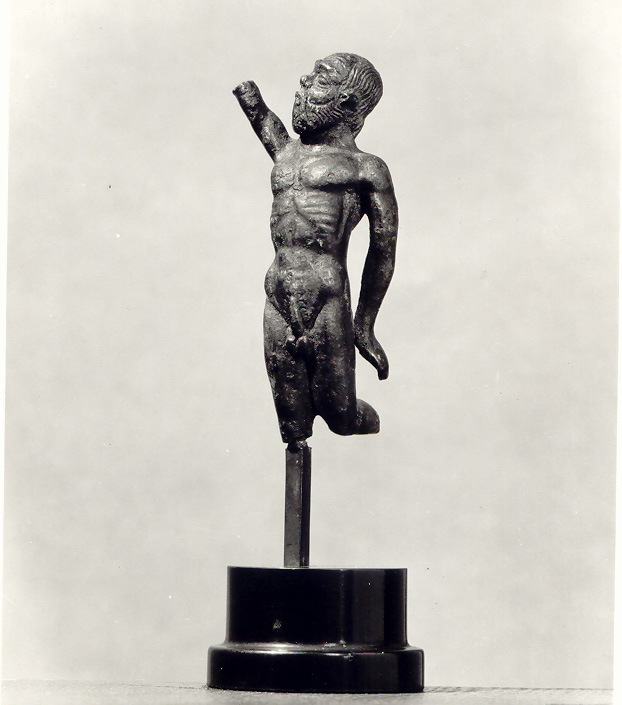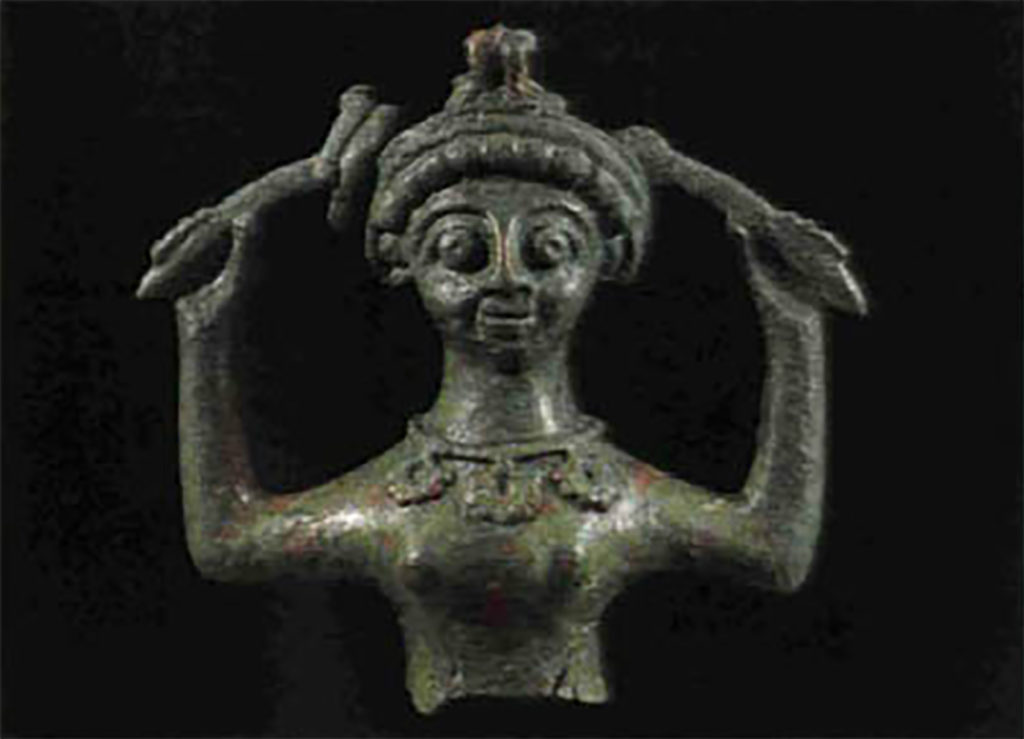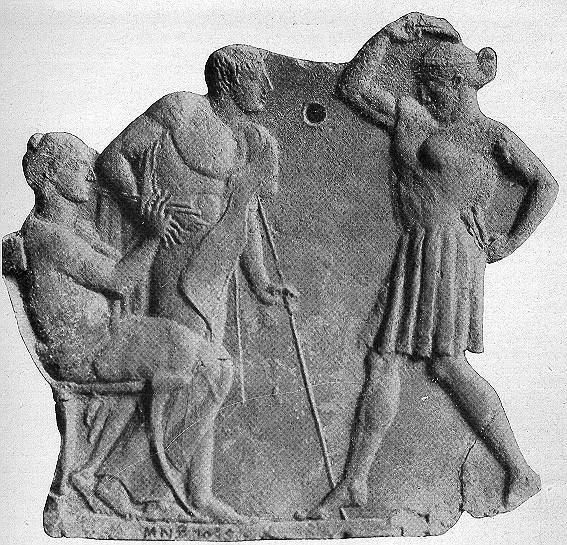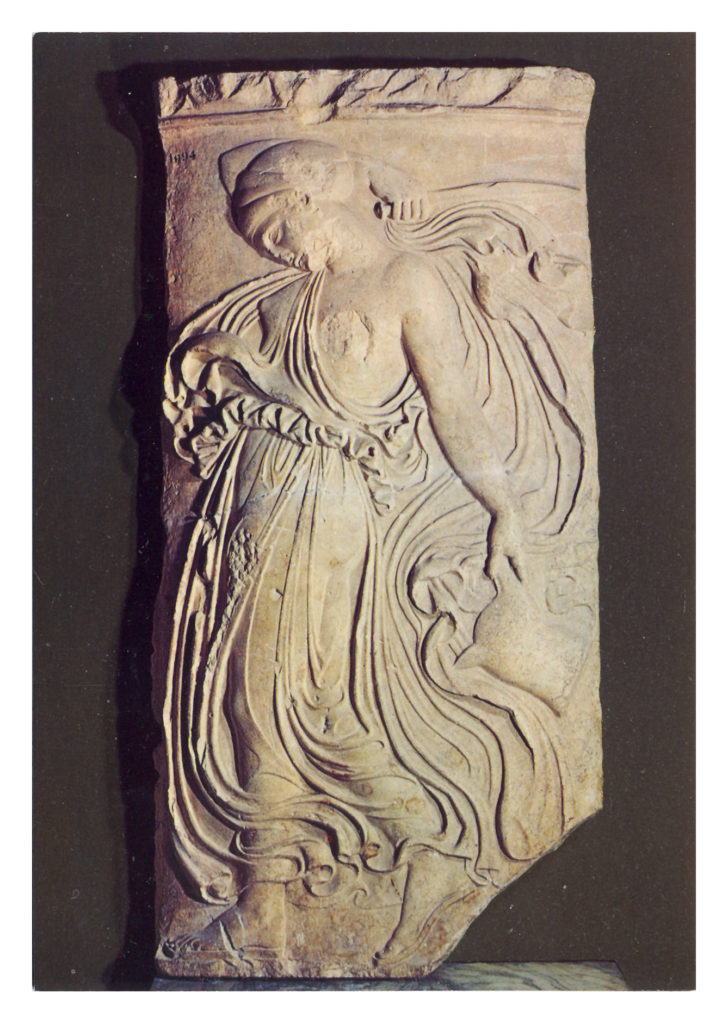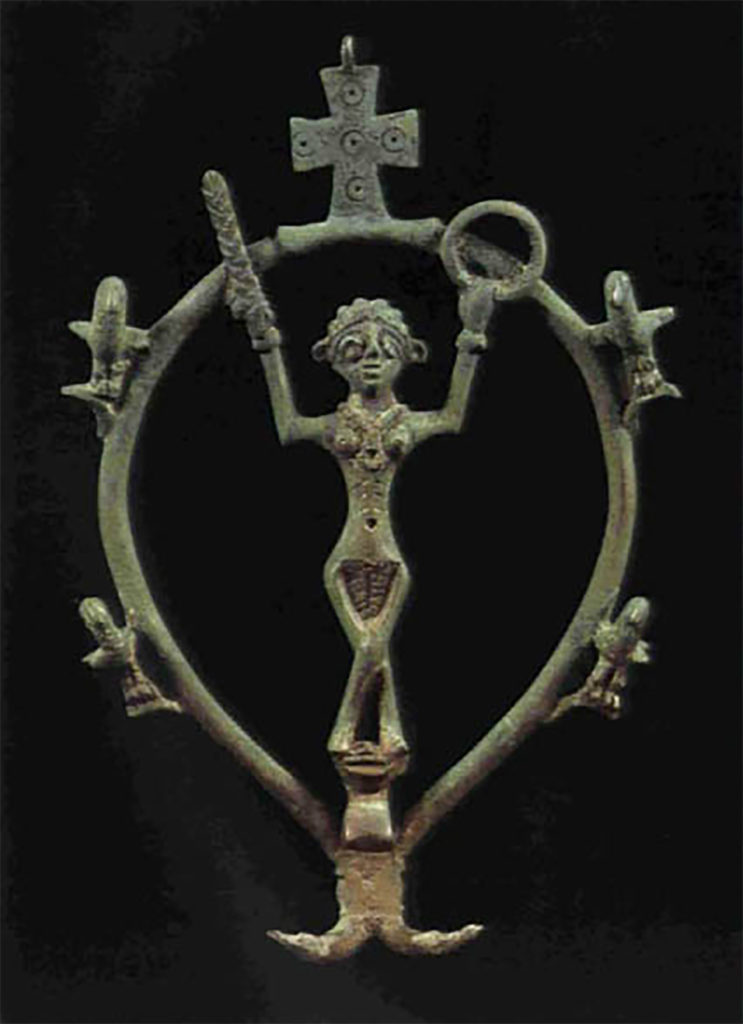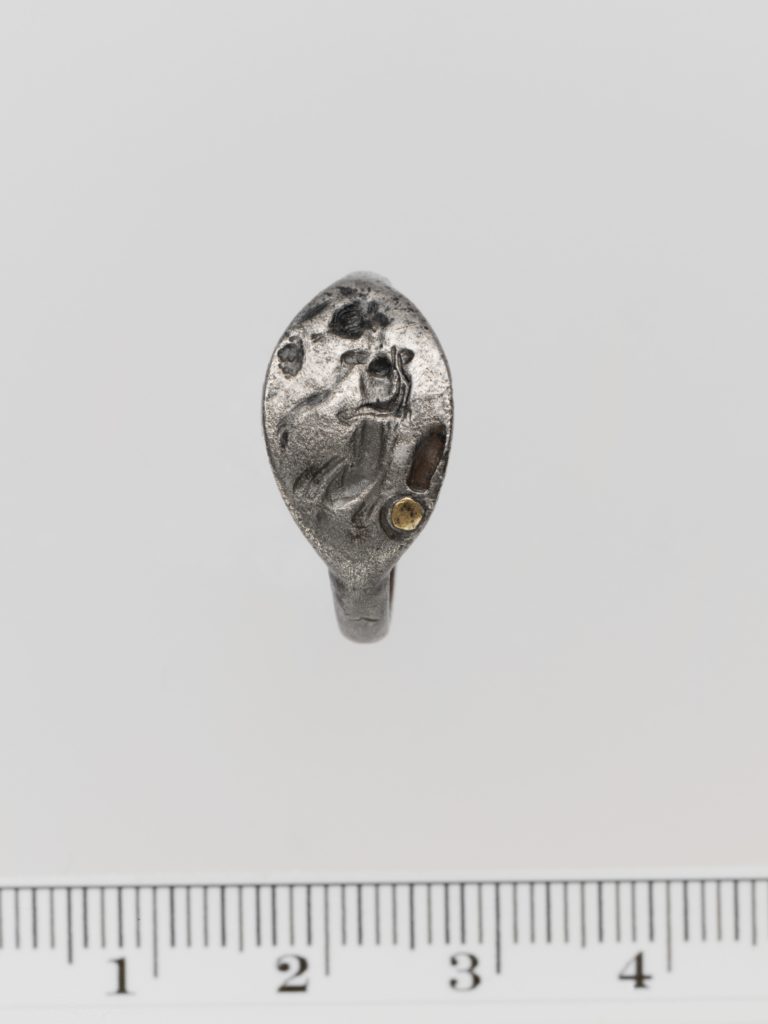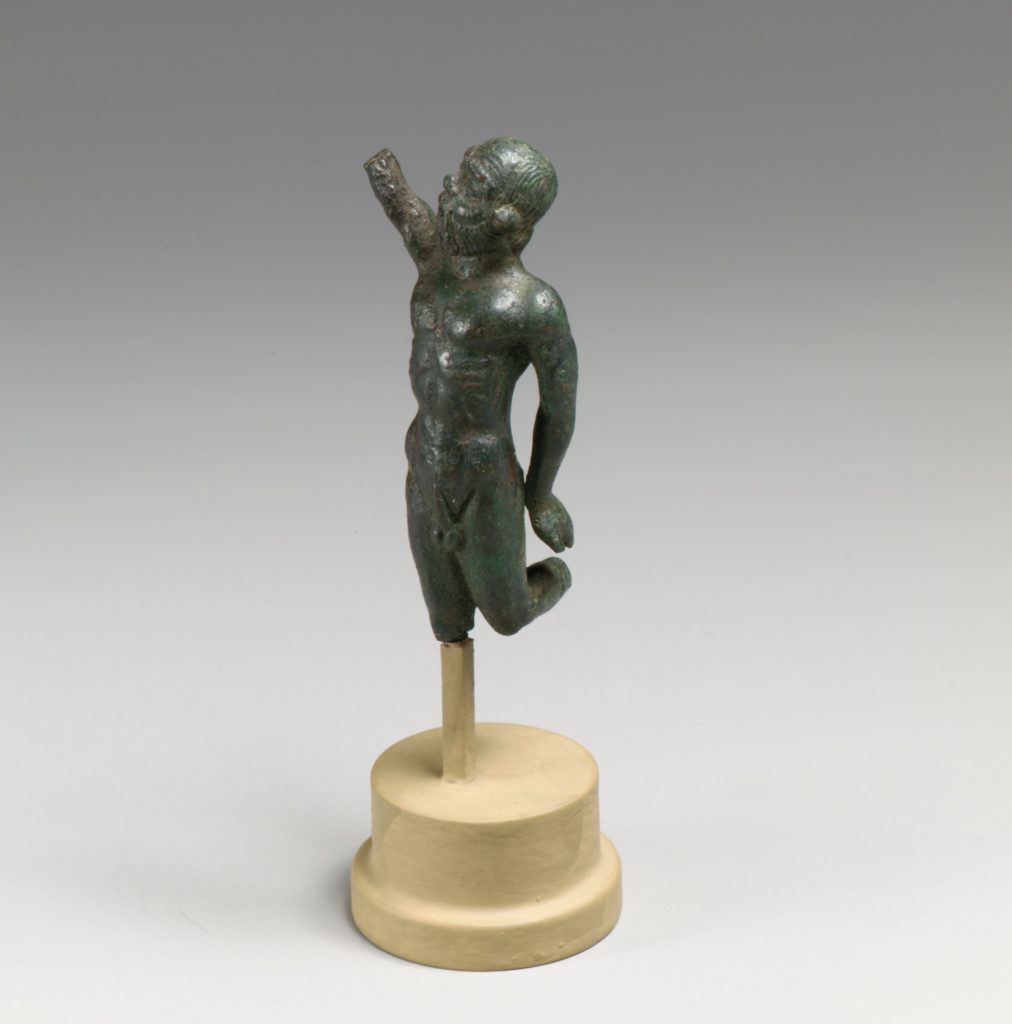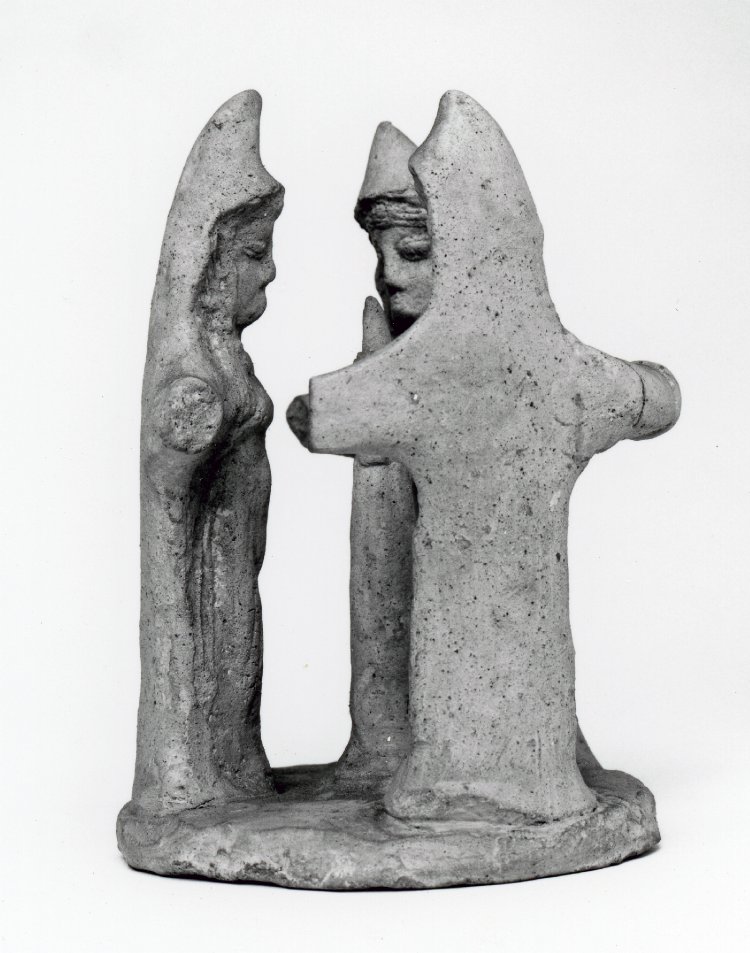Sculpture / -500 to -400
Greek silver ring. Maenad with thyrsos (fennel stalk topped with ivy) and sword in an ecstatic dance.
1.6 cm length
Sculpture, relief, silver ring
400 B.C., approximately
Maenad with thyrsos (fennel stalk topped with ivy) and sword in an ecstatic dance. Classical period. A. late 5th or early 4th century B.C.
Ancient Greece
Bronze satyr. Classical Greece, late 5th-4th century B.C.
Sculpture, statuette, bronze
6.2 cm height
400 B. C. approx
Satyrs and maenads, the male and female followers of the god of wine, Dionysos, occur so frequently in classical vase-painting that their relative rarity among Greek bronze statuettes is noteworthy; they are far more popular in Etruscan art. With his lithe body, shaggy hair, and exuberant pose, this figure wonderfully conveys the vitality that is the essential quality of these creatures. They are an embodiment of animal nature in human form.
Ancient Greece
Terracotta group of three three female figures dancing round a stylised tree, set on a flat circular base
Sculpure, terracotta figurines
400 B. C. approx
Made and found in Cyprus. Crypto-archaic art. solid mould-made figures with plain backs, the base and tree are hand modelled; the three figures are standing facing inwards with their arms out-stretched, originally holding hands in a circle but now incomplete; they wear long robes showing East Greek influence.
Ancient Greece, Cyprus

